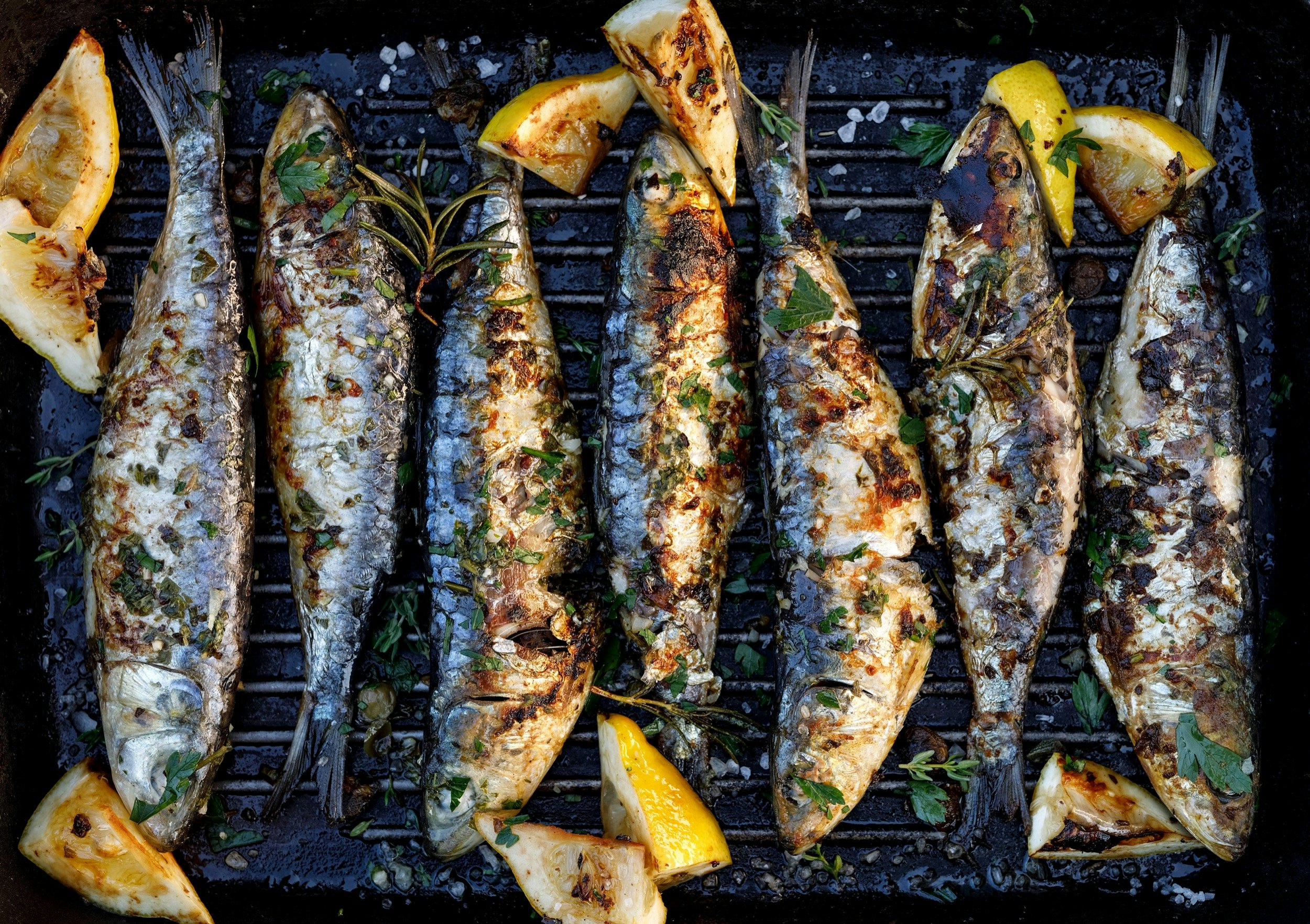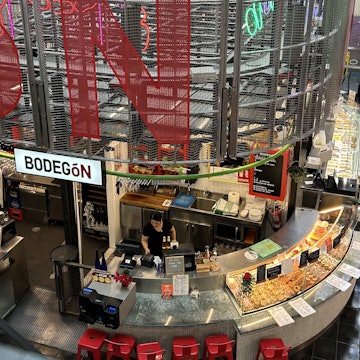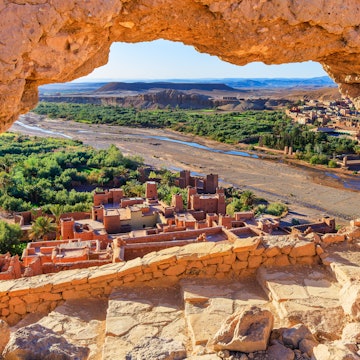
Unspoiled Spain: How to feel the spirit of the northern coast
Sponsored by

Nov 14, 2022 • 9 min read

Northern Spain is a gorgeous, green region full of crashing coasts, fascinating culture, outdoor adventure and culinary delights © Anetlanda / Shutterstock
With its cliff-crashing waves, moody landscapes, and incredible recipes, northern Spain is a gorgeously green gem overlooked by many travelers. Its dramatic coasts and rugged mountains have been home to unique cultures and traditions, from the Celtic Galicians to the mysterious Basques, for millennia.
Beyond the outdoor vistas, the culinary riches of Green Spain are also on display – spread across tables and bar tops. Nature has blessed the region with flavorful and fresh seafood drawn straight from cold waters, and fascinatingly salty wines cultivated on seaside slopes.
The stunning coasts of Galicia, colorful fishing ports of Basque Country, infinite views of Cantabria, and beaches galore of Asturias can be explored in a week, though you’re guaranteed to be left wanting more. Here’s how:

Day 1: San Sebastián
The ocean and the mountains collide to form the boundaries of San Sebastián, a small town on the northern coast. It all comes together at La Concha Bay, one of the most beautiful in Spain, where elegant art nouveau buildings look out over its waters and green Mount Urgull rises from its edge.
Below this historic hill is where you’ll find the city’s modern cultural monuments, the pintxo bars. The city’s Old Part – once rumored to have more bars per person than anywhere else in the world – is the birthplace of the pintxo, a small snack like a Spanish tapa, but more elaborate. Bar tops throughout the district are often covered with these delicious bites, so elbow up with the locals, grab a pintxo, a glass of wine, and repeat down the street.

Many of these bars have been in the same family for generations, serving up delicious skewers of seafood conserves and pickled vegetables. On the city’s oldest route, 31 of August Street, is La Viña, where the original Basque burnt cheesecake is sliced in droves, the perfect way to end a meal. Afterward, take the easy hike up Mount Urgull for some of the best views of the city’s gorgeous Isla de Santa Clara and coastal promenade.

Day 2: The Basque Coast
When heading west out of San Sebastián, get your camera ready. On the coastal road, every turn reveals a new breathtaking discovery; from the gray flysch (sedimentary rock stacks that jut out of the sea at abrupt angles), to low-lying storybook fishing villages, where red and green-painted boats bob in ports. The cultural and natural richness is on full display in coastal towns like Lekeitio and Bermeo, the latter of which has multiple hiking routes with infinite blue ocean on one side and green hills on the other.
Continue to the west and spend an afternoon in Bilbao, Basque Country’s largest metropolitan area, walking through the twisted titanium halls of Frank Gehry’s iconic Museo Guggenheim Bilbao. Or pass on the architectural allure of the city and land instead in Santurtzi, where you can take a boat out to sea to spot large whales and orcas in their natural habitat.

Day 3: Santander
Santander rose to prominence in the early 1900s as a favorite destination for Spanish royalty to holiday. Since then, the capital of Cantabria has been a favorite destination for lovers of nature, fine sandy beaches and sports such as sailing and surfing. Its beautiful seafront promenade, its majestic buildings and a rich gastronomic choices, where the delicacies of the sea stand out, are some of the attractions in this elegant city.
Make time for a stroll along the belle-époque elegance of El Sardinero’s sandy beach up to the Magdalena Peninsula, where the royal family’s English-inspired summer palace is open to public visits. The name ‘Sardinero’ is a reference to the abundant sardine, fished from the bay’s cold waters, which is a mainstay in the locals’ summer cuisine. Join them in the Barrio Pesquero, where sardines are served fresh off the grill with nothing but a dash of sea salt and a bit of olive oil. Just down the road, visit the fantastic Centro Botín — Renzo Piano’s modernist architectural wonder, and an ambitious waterfront arts and cultural center. It overlooks the Bay of Santander, one of the most beautiful in the world.

Day 4: Cantabria to Asturias
The best way to begin a day in Cantabria is with a strong coffee and an intense butter cake before heading out to explore the unspoiled rural splendor of its hidden valleys and mountain passes. Named after the nearby Pasiego valleys, some of the best sobaos pasiegos can be found at Casa El Macho bakery, just south of Cabarceno Natural Park. This former open cast mine turned outdoor wildlife reserve is beloved by locals and visitors alike for its wildlife watching and rustic beauty.
Cantabria is also known for its scattered caves, home to some of the oldest and most superlative prehistoric art in the world. With hundreds of images of animals, handprints and other symbols painted by early humankind between around 45,000 and 10,000 BC, visiting these relics of the ancient past is worth an excursion. Ten of these caves, including Altamira, are recognized as UNESCO World Heritage Sites.

Heading west of Santander, seek out the region’s many quiet sea coves – the most rivetingly beautiful in all of Spain. Create a route determined by chance, drifting along the 100-mile coastal road, or aim for the most brilliant – like the cozy, rock-enclosed Playa de Berellín in Cantabria, the Playa del Silencio across the border in Asturias, or the unique Playa de Gulpiyuri, an inland beach looking out over an open meadow. The verdant valleys of Asturias grow, among other things, many millions of apples. So, when it’s time for a drink reach for a cider – the favorite beverage of the locals. One of the best places for the experience is the Asturian ciderhouse at Sidreria Llagar Cabañón. Charm oozes from this spot, built in a restored traditional Asturian house, and the bodega holds more than 100,000 liters.
The dramatic scenery is often accessible only by foot, which keeps the crowds down and the natural spirit intact. Still, you’re likely to run into other wanderers, including surfers, day hikers and pilgrims on the Camino del Norte.

Day 5: The Picos to Oviedo
Driving along the coastal highway in Asturias, the tendency is to look up — it seems like around every curve, a more breathtaking, green-skirted mountain awaits admiration. The Picos de Europa National Park, bordering both Cantabria and Asturias, is one of seven UNESCO biosphere reserves in the region, and is spread out over 11 picturesque villages. Another biosphere reserve is the Parque Natural de Redes – here the taste of the surrounding mountains is perhaps best enjoyed at the rustic Casa Juanín, in the tiny village of Pendones. This is a true gem, serving traditional fabada (bean stew) with wild boar, braised goat, and other mountain specialties – all while offering an incredible value for your money.
In the village of Arriondas, rent a canoe and participate in a hallowed local tradition: the Descenso del Sella. The long version of the canoe ride ends in Ribadasella, which epitomizes all of Asturias’s charm in a single village. Populated since the Paleolithic area (the Tito Bustillo cave, inhabited from 22,000-10,000 BC, is an UNESCO World Heritage Site), the important role Ribadasella has played in local culture is depicted in six tiled murals by Antonio Mingote, distributed along the Paseo de la Grúa.

Next, head to the beautiful Playa de Vega to refuel at Gueyu Mar, one of Spain’s most famous restaurants, with delicious seafood from the Cantabrian Sea. The chef has his own line of fish conserves and is a grill master, giving fish a singular, smoky touch that keeps in-the-know foodies on the wait list.
Elsewhere in Asturias, follow the “dinosaur coast” to the province’s largest city, Gijón, a lively destination with a variety of cultural experiences, from beautiful urban beaches to an old town steeped in a vibrant seafaring past. Thirteen miles to the northwest are the cliffs of Cabo Peñas, which mark the start of the western half of Asturias’ coast – Gorgeous sandy stretches and towering cliffs dot this entire coastline.
Nearby Avilés has elegant colonnaded streets and the Centro Niemeyer, a multifaceted international cultural centre. It was designed by Brazilian architect Oscar Niemeyer as a cultural nexus between the Iberian Peninsula and Latin America. The bold-white complex hosts a range of avant-garde theatre, music, dance, cinema, literature and art shows.
Finally, the historic Oviedo is a fun, sophisticated capital city, with a stash of intriguing sights, excellent restaurants and a lively population. The origin of the Primitive Camino de Santiago is located here, marking the “origin of the Way” as you head west toward Galicia.
Gorgeous sandy stretches and towering cliffs dot the entire coastline here. Check out Cudillero – the most picturesque fishing village on the Asturian coast, with houses painted in a rainbow of pastels cascading down to a tiny port on a narrow inlet – and Luarca, which features a deep valley and expansive harbor and is the perfect base for the nearby beaches.

Day 6: El Camino del Norte – Crossing into Galicia
Galicia is home to the end of one of the world’s most famous hikes — the Camino de Santiago, or Way of Saint James. What was long a pilgrimage prescribed as atonement for sins is now a paradise for nature lovers and active travelers. Myths and superstitions abound about the miracles that can happen on “El Camino,” but at the very least you can count on some incredible sights along the way.
One of the quaintest villages on the route in Galicia is O Cebreiro, a hamlet filled with Celtic pallozas, or round stone houses, high up in the mountains. Follow the yellow arrows of the camino past natural wonders, green valleys, and perfect panoramas.
Just off the route is the unspoiled shores of the Costa da Morte. Here, rocky headlands, winding inlets, small fishing towns, plunging cliffs, sweeping bays and sandy beaches have seen a lot of shipwrecks – giving this misty, mysterious region its foreboding name.

Day 7: Santiago de Compostela
Santiago de Compostela is the end of the line when trekking across the top of Spain. The city has long had experience as a destination — since the Middle Ages, millions have made their way slowly to this, the end of the Camino de Santiago.
For the best view of the famous cathedral, attend the pilgrim’s mass, where a giant, silver-plated incense holder is swung from the ceiling, historically to get rid of unseemly pilgrim odor. The original church was built in the 800s, but Romanesque, Gothic and Baroque construction have made the purported burial place of Saint James the Great, one of the apostles of Jesus Christ and the patron saint of Spain, what it is today.

After visiting the cathedral, it’s time for a reward for yesterday’s walk, in the form of the best of Galicia’s food culture. Grab a vermouth by the Mercado de Abastos, where the city’s (and by extension, Spain’s) freshest seafood is heaped up for sale. Try the national dish, polbo á feira, at Bodegón Os Concheiros Pulpería — rich, tender octopus drizzled with olive oil and smoky pimentón, addictive when washed down with a local albariño wine.
Take a sweet Santiago tart, an almond cake topped with the outline of the cross of Santiago, to-go from one of the convents selling homemade sweets through tiny windows. Enjoy it in the 16th-century Parque de Alameda, resting your legs, and reflecting on the spirit of Green Spain.
Sponsored by Green Spain
As a travel entertainment and inspirational media outlet, we sometimes incorporate brand sponsors into our efforts. This activity is clearly labeled across our platforms.
This story was crafted collaboratively between Green Spain and Lonely Planet. Both parties provided research and curated content to produce this story. We disclose when information isn’t ours.
With sponsored content, both Lonely Planet and our brand partners have specific responsibilities:
-
Brand partner
Determines the concept, provides briefing, research material, and may provide feedback.
-
Lonely Planet
We provide expertise, firsthand insights, and verify with third-party sources when needed.















